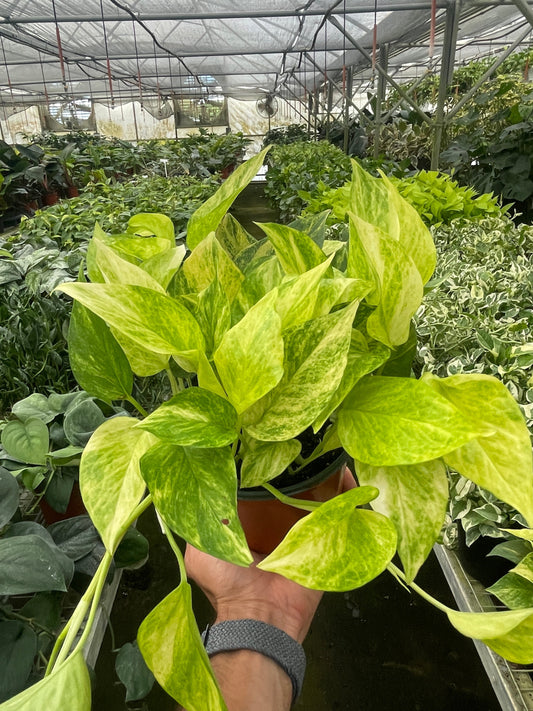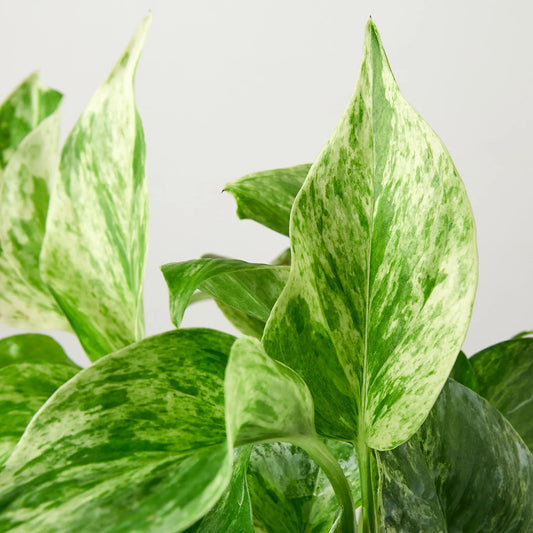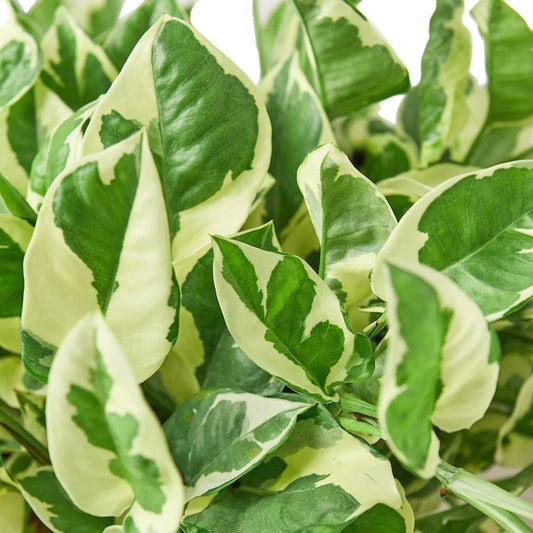Tiger Tooth Aloe Aerial Roots: Everything You Need to Know
Cafe Planta Team
Have you ever noticed your Tiger Tooth Aloe sprouting roots above the soil and wondered what’s going on? You’re not alone. These peculiar aerial roots can be a bit of a head-scratcher for many plant lovers. But don’t worry, we're here to unravel the mystery of these quirky roots and what they mean for your plant.
In this article, we'll cover everything you need to know about Tiger Tooth Aloe aerial roots. From why they appear to how they affect your plant’s health, and what you can do about them. Whether you’re a seasoned plant parent or just starting your journey, you’ll find helpful tips to keep your Tiger Tooth Aloe thriving.
What Are Aerial Roots?
Aerial roots are exactly what they sound like—roots that grow above the ground. Unlike the roots that grow in soil, aerial roots are adapted to take in moisture and nutrients from the air. Many plants, especially those in tropical climates, develop aerial roots as a way to cling to surfaces and absorb moisture from humid environments.
In the case of Tiger Tooth Aloe, these roots might seem out of place. After all, aloes are typically known for their fleshy leaves and ability to store water, not for sprouting roots above ground. However, it’s a natural occurrence and can happen for various reasons.
Interestingly enough, aerial roots are a common feature in plants like orchids and philodendrons, where they serve additional functions like supporting the plant or helping it climb. So, if your Tiger Tooth Aloe has aerial roots, it's just borrowing a tactic from its more tropical cousins!
Why Do Tiger Tooth Aloes Develop Aerial Roots?
The appearance of aerial roots on your Tiger Tooth Aloe can be intriguing. But why do they appear in the first place? Generally, it’s the plant’s way of adapting to its environment. Here are a few reasons your Tiger Tooth Aloe might start growing these roots:
- Lack of Moisture: Your aloe might be trying to gather more moisture from the air if it’s not getting enough water.
- Humidity Levels: In environments with high humidity, aloes may develop aerial roots to take advantage of the moisture-rich air.
- Support and Stability: Sometimes, aerial roots help anchor the plant if it becomes top-heavy or if the soil is too loose.
- Natural Growth Habit: Some aloes naturally develop aerial roots as part of their growth pattern, especially when they are in environments that mimic their native habitats.
While aerial roots are generally not a cause for alarm, they can be a signal to check your plant’s environment. Ensure you’re providing the right amount of water and that the humidity is suitable for your Tiger Tooth Aloe.
Do Aerial Roots Indicate a Problem?
Before you panic and start snipping away at those unexpected roots, take a closer look at your plant’s overall health. Aerial roots on a Tiger Tooth Aloe don't necessarily indicate a problem. However, they can be a sign that your plant is experiencing some environmental stress.
Here are a few scenarios where aerial roots might indicate a need for adjustment:
- Overwatering or Underwatering: If your aloe isn’t getting the right amount of water, it might compensate by growing aerial roots. Check your watering schedule and adjust as needed.
- Poor Soil Quality: If the soil isn’t providing enough nutrients, the plant might try to supplement its intake through aerial roots.
- Inadequate Light: Lack of proper lighting can stress the plant, leading to unusual growth patterns, including aerial roots.
That said, if your Tiger Tooth Aloe appears healthy overall—bright, firm leaves and a good color—then the aerial roots might just be part of its natural charm. Keep an eye on it, but don't lose sleep over a few extra roots.
How to Care for a Tiger Tooth Aloe with Aerial Roots
So, what should you do if your Tiger Tooth Aloe starts sprouting aerial roots? Here are a few practical tips to ensure your plant stays healthy and happy:
- Adjust Watering: Check the soil moisture regularly. Aloes prefer to dry out a bit between waterings. If the soil is consistently dry, increase your watering frequency.
- Improve Humidity: If you suspect low humidity is the cause, consider misting your plant lightly or placing a humidifier nearby.
- Optimize Lighting: Ensure your aloe is getting enough sunlight. A spot with bright, indirect light is ideal.
- Check Soil Quality: Use well-draining soil specifically designed for succulents. This can help prevent root rot and support healthy growth.
- Trim if Necessary: If the aerial roots become too unwieldy, you can trim them back. Use clean, sharp scissors to avoid damaging the plant.
By adjusting these aspects of care, you can address the underlying reasons for the aerial roots and help your Tiger Tooth Aloe thrive.
Can You Propagate Aloe Using Aerial Roots?
Propagation is a fun and rewarding way to expand your plant collection. But can you use those aerial roots to propagate your Tiger Tooth Aloe? The short answer is yes, but it’s a bit more involved than traditional propagation methods.
Here’s a step-by-step guide to propagate using aerial roots:
- Choose Healthy Roots: Look for thick, healthy aerial roots that appear robust.
- Prepare a Pot: Fill a small pot with succulent soil or a well-draining mix.
- Cut and Plant: Gently cut the aerial root from the parent plant, ensuring it has a small section of stem attached. Plant it in the prepared pot.
- Water Sparingly: Water the new plant lightly, just enough to moisten the soil. Be careful not to overwater.
- Provide Bright Light: Place the pot in a location with bright, indirect light and monitor its growth.
While propagation from aerial roots might not always be successful, it’s worth a try if you love a good gardening experiment. Plus, it’s a great way to learn more about how your plants grow and adapt.
Common Mistakes and How to Avoid Them
We all make mistakes, especially when it comes to plant care. Here are some common missteps plant parents make with Tiger Tooth Aloe and how to avoid them:
- Overwatering: One of the most common mistakes is giving your aloe too much water. Remember, these plants store water in their leaves, so they don’t need frequent watering. Let the soil dry out between waterings.
- Ignoring Light Needs: While aloes can tolerate low light, they thrive in bright, indirect sunlight. Find a sunny spot in your home to keep your plant happy.
- Neglecting Soil Drainage: Using regular potting soil can lead to waterlogged roots. Make sure your soil is well-draining to prevent root rot.
- Forgetting to Adjust for Seasons: As the seasons change, so should your care routine. In winter, reduce watering and ensure your plant isn’t exposed to cold drafts.
By staying mindful of these common pitfalls, you’ll be well on your way to nurturing a healthy Tiger Tooth Aloe.
Incorporating Tiger Tooth Aloe into Your Home Decor
Beyond their unique aerial roots, Tiger Tooth Aloes are striking additions to any home decor. Their spiky leaves and compact size make them perfect for adding a touch of greenery to small spaces.
Here are some ideas to incorporate Tiger Tooth Aloe into your decor:
- Window Sills: Place your aloe on a sunny window sill where it can soak up the light and add life to the space.
- Bookshelves: Use aloes as a natural bookend or to break up lines of books with a splash of green.
- Bathrooms: If your bathroom has a window, place the aloe in there. The humidity from showers can benefit the plant.
- Terrariums: Create a mini desert landscape with your aloe as the centerpiece, surrounded by other succulents and pebbles.
The key is to play around with placement and find a spot where your aloe can thrive while enhancing your home’s aesthetic.
Dealing with Pests on Tiger Tooth Aloe
No one likes uninvited guests, especially when they’re pests on your beloved plants. Tiger Tooth Aloe is generally hardy but can occasionally attract pests like aphids, mealybugs, or spider mites.
Here’s how to deal with these common pests:
- Aphids: These small insects can be washed off with a steady stream of water. For severe infestations, consider using insecticidal soap.
- Mealybugs: Remove these cotton-like pests by dabbing them with a cotton swab soaked in rubbing alcohol.
- Spider Mites: Increase humidity around your plant by misting or using a humidifier, as mites thrive in dry conditions.
Regularly check your plants for any signs of infestation and take prompt action to ensure your Tiger Tooth Aloe stays healthy and pest-free.
Conclusion
In summary, while aerial roots on your Tiger Tooth Aloe might catch you off guard, they’re a normal part of the plant’s growth and response to its environment. By understanding the reasons behind this growth and adjusting your plant care accordingly, you can ensure your aloe remains healthy and vibrant.
At Cafe Planta, we’re here to support your plant journey. Whether you’re searching for your next plant friend or need advice on plant care, we’re just a email or Instagram message away. We believe in the power of plants to bring joy and connection into our lives, and we’re excited to help you cultivate a thriving plant collection at home.



















